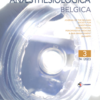Catheter-based serratus anterior plane block vs. continuous wound infiltration for postoperative pain control following minimally invasive atrioventricular valve surgery : a randomized, prospective trial
Minimally Invasive Surgical Procedures, Cardiac Surgical Procedures, Serratus Anterior Plane Block, Pain, Postoperative
Published online: Sep 20 2023
Abstract
Background: Minimally invasive cardiac surgery via mini-thoracotomy reduces surgical trauma compared to full sternotomy. However, thoracotomy can cause severe postoperative pain. Managing postoperative pain is challenging but critical for fast rehabilitation and avoidance of chronic pain. Our objective was to compare the efficacy of analgesia of a bolus in combination with continuous local anaesthetics using a serratus anterior plane block (SAPB) catheter versus a wound infiltration catheter (CWI) in patients after minimally invasive cardiac surgery.
Design and setting: We conducted a monocentric, prospective, randomized controlled trial between January 2021 and August 2022. The study was performed at Ghent University Hospital, Belgium.
Methods: Patients scheduled for minimally invasive cardiac surgery via thoracoscopy and mini-thoracotomy were randomized to receive either a SABP or a CWI catheter. Postoperatively, continuous ropivacaine 0.2% was started at 10ml/h, and a supplementary bolus of 30ml ropivacaine 0.5% was administered one hour before detubation. The catheter remained in place for at least 24 hours. The primary endpoint was opioid consumption during the first 48 hours postdetubation. Secondary endpoints were anti-emetic consumption, Numerical Analogue Score for 48 hours, length of stay in the Intensive Care Unit and hospital, and incidence of chronic pain. Qualitative data were compared using the Chi – Square test, quantitative data were analyzed with the Student’s t-test.
Results: During the study period, a total of 21 patients received a SAPB catheter and 26 patients received a CWI catheter. No statistical significant differences were seen in baseline characteristics. In the first 48 hours postdetubation, morphine equivalent consumption was similar in both groups (p= 0.52), with no differences observed in the early, mid- or late postoperative phases. The total morphine equivalent dose was 21.8 mg in the SAPB and 18.6 mg in the CWI group. There were no significant differences in postoperative vomiting and nausea, length of stay in the Intensive Care Unit and in the hospital and chronic thoracic pain (23% and 33% for the SAPB and CWI group, respectively, p=0.54).
Conclusion: This prospective study found no significant difference in postoperative opioid consumption between patients who received a serratus anterior plane block catheter and those who received a wound catheter with
bolus and continuous ropivacaine, following minimally invasive cardiac surgery via right thoracoscopy and mini-thoracotomy.
